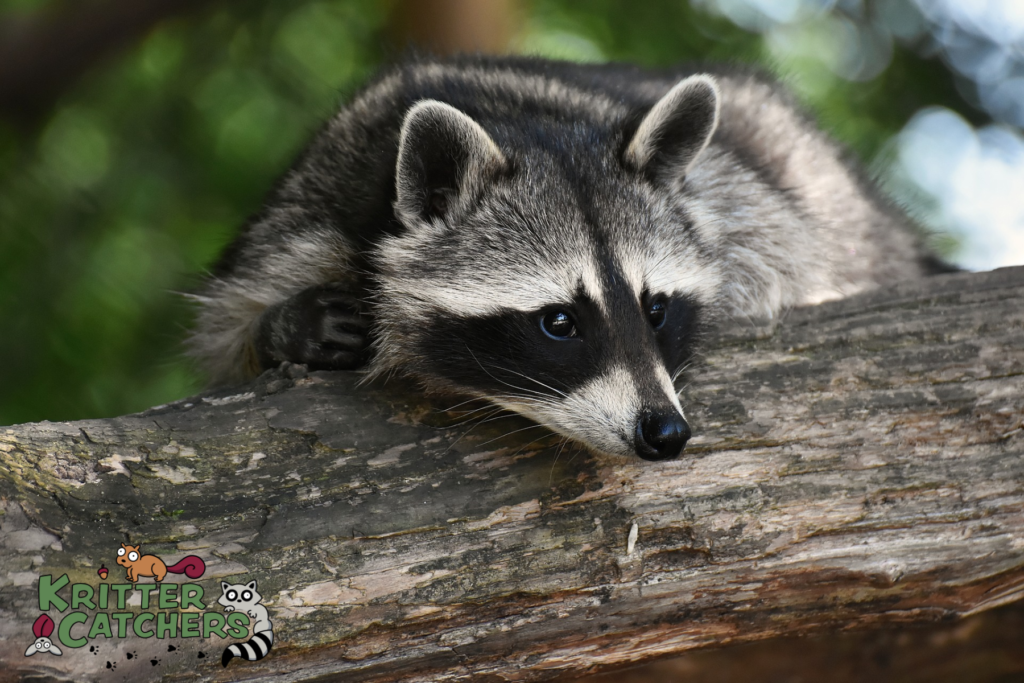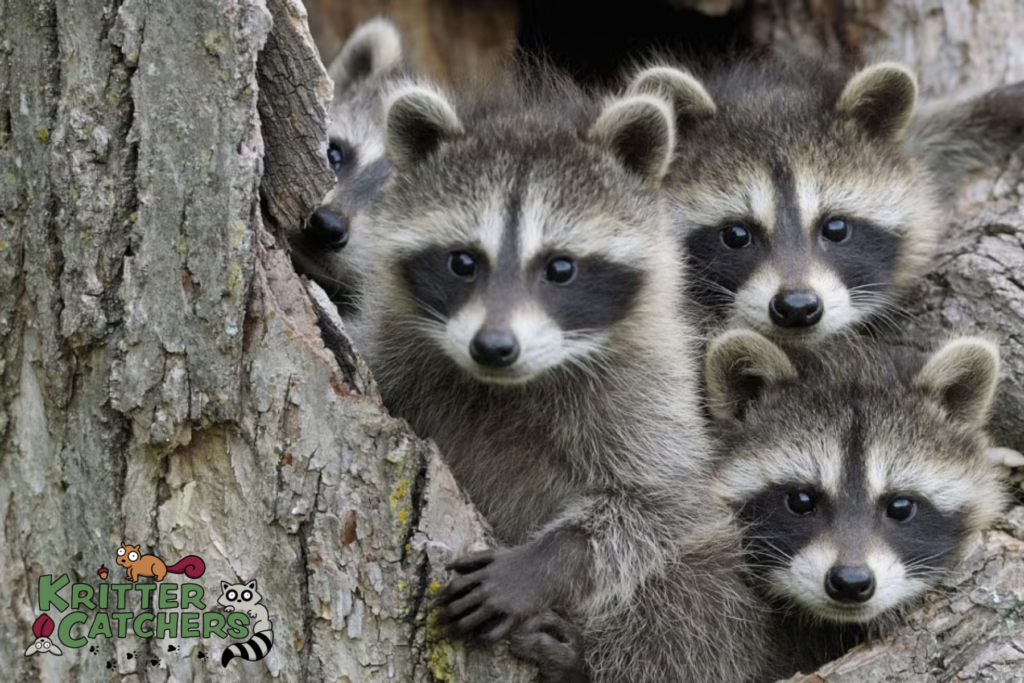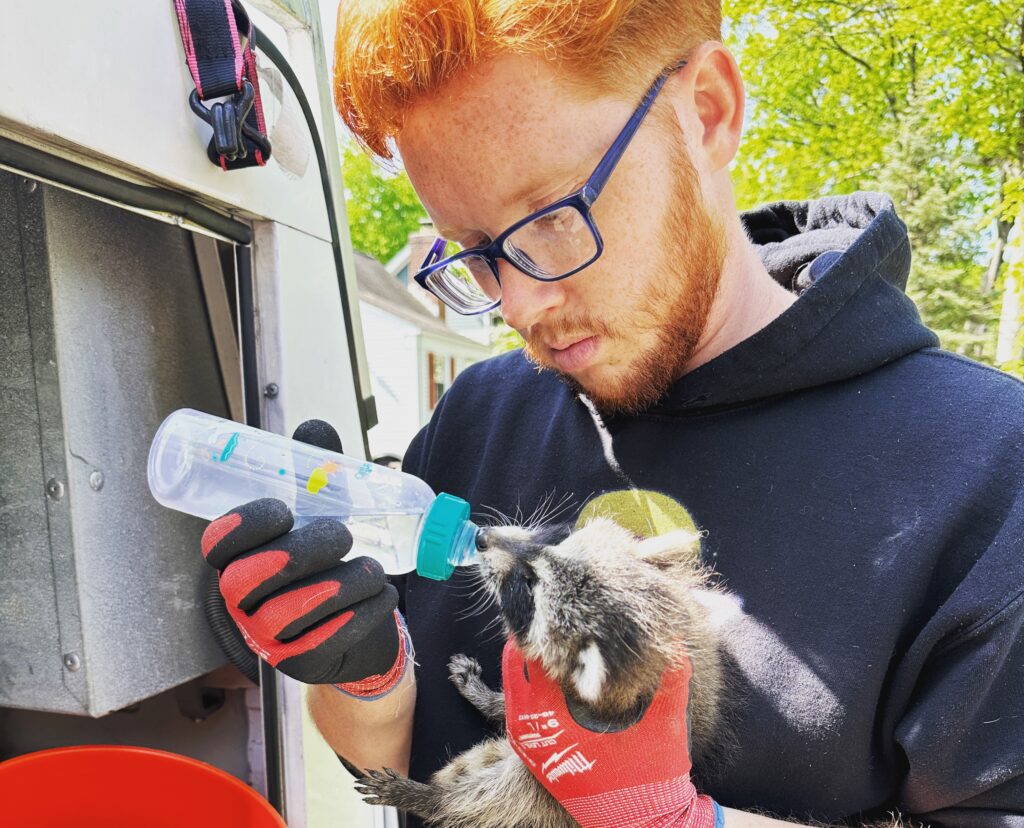Raccoons are common pests that can cause significant damage to your home if left unchecked. While they are often cute and appear harmless, they are notorious for causing havoc in attics and other parts of the house. Many homeowners are unaware of raccoons living in their homes until the damage has already been done. In this article, we’ll explore how to spot the signs of a raccoon infestation in your attic and what to do about it before it’s too late.
Why Raccoons Are a Problem in Your Attic
Raccoons are nocturnal creatures, which means they are most active during the night. They are skilled climbers and often gain access to homes through the roof or attic spaces. Their ability to sneak in unnoticed and their tendency to settle in quiet, undisturbed areas make attics the perfect hiding place. Unfortunately, once raccoons have entered your attic, they can cause a lot of damage.
These animals can chew through wires, insulation, and structural beams, potentially compromising the integrity of your home. They can also carry diseases such as rabies, leptospirosis, and raccoon roundworm, posing a health risk to both you and your pets.
How to Spot the Signs of Raccoons in Your Attic
If you suspect that raccoons may be living in your attic, it’s important to be vigilant and look for signs of their presence. Here are some common indicators to watch for:
1. Noises in the Attic
One of the most obvious signs that you have raccoons in your attic is the sound of activity during the night. Raccoons are active primarily after dark, so if you hear scratching, scurrying, or thumping noises at night or early morning, it’s possible that raccoons are present. These noises could be from them moving around, digging, or nesting in the insulation.
2. Droppings and Urine Stains
Raccoons leave behind droppings and urine, which can be found in the attic or around the entry points to your home. Raccoon feces are often dark, round, and have a strong, unpleasant odor. The presence of these waste products is a clear sign of an infestation. Moreover, urine stains may cause damage to the insulation, leading to costly repairs if not addressed.
3. Damaged Roofing or Vents
Raccoons are known for their destructive tendencies, especially when they’re trying to get into your attic. They may tear through shingles, chew on vents, or even rip open soffits to gain entry. If you notice any damaged areas on your roof or attic vents, it’s a sign that raccoons may be attempting to get inside.
4. Holes and Entry Points
As mentioned earlier, raccoons are skilled climbers, and they can find even the smallest gaps in your roof or walls. Look for small holes, broken soffits, or gaps around chimneys, vents, or windows. If there are any easy routes for raccoons to enter, you’ll want to seal them off before they take advantage of them.
5. Footprints or Tracks
Raccoons have distinctive footprints, with five toes on their front paws and four on their back paws. If you suspect raccoons in your attic, you may find their tracks in dusty areas or along beams and rafters. Raccoons often leave behind paw prints as they scurry around the attic in search of food or shelter.
6. Signs of Nesting
Raccoons like to build nests in quiet, undisturbed places like attics. If you notice shredded insulation, fabric, or other materials piled together in a corner of the attic, it could be a raccoon nest. These nests are usually built to provide warmth and a safe place for their young.
7. Foul Odors
Raccoons may leave behind a foul odor in your attic, especially if they have been there for a while. The combination of urine, feces, and rotting food can create a strong, unpleasant smell that may seep into your living space. If you begin to notice foul odors in your home, it’s time to investigate further.
Why It’s Important to Act Quickly
If you notice any of the signs mentioned above, it’s essential to act quickly. Raccoons are highly resourceful and can cause extensive damage to your home in a short amount of time. Their ability to chew through wires and insulation can lead to electrical fires, water damage, and costly repairs. Additionally, raccoons can reproduce quickly, and an infestation can grow fast, leading to even more damage.
Ignoring the problem or attempting to remove the raccoons on your own can be dangerous. Raccoons are wild animals, and they can become aggressive if threatened. They may also carry diseases that can spread to humans and pets. It’s always best to call a professional for help with raccoon removal.
How to Prevent Raccoons from Entering Your Attic
Prevention is key when it comes to raccoons. After you’ve addressed any current infestations, you’ll want to take steps to ensure that raccoons don’t come back. Here are a few preventive measures you can take:
1. Seal Entry Points
Inspect your roof, soffits, vents, and any other possible entry points. Seal off any gaps, cracks, or holes that could provide access for raccoons. This might involve replacing damaged shingles, installing chimney caps, or adding mesh to vents.
2. Trim Tree Branches
Raccoons are skilled climbers, and they may use tree branches to access your roof. Trim any branches that are close to your house, especially those that reach over your roof or near your attic.
3. Install Raccoon-Proof Vents
Consider installing raccoon-proof vents and chimney caps to prevent animals from entering your attic. These special vents allow airflow while keeping pests out.
4. Keep Food Sources Away
Raccoons are attracted to food, so make sure that your trash cans are securely closed and that you don’t leave pet food or bird seed outside. Clean up any outdoor food sources that might attract raccoons to your home.

When to Call a Professional
If you suspect that you have raccoons in your attic, it’s important to contact a professional wildlife removal service immediately. Professional wildlife removal experts can assess the situation, safely remove the raccoons, and take steps to prevent future infestations.
At Kritter Catchers NJ, we offer expert raccoon removal services for homes throughout New Jersey. Our experienced team specializes in safe and humane wildlife removal, ensuring your home is protected from unwanted pests. We provide comprehensive solutions for wildlife removal Bergen County NJ and the surrounding areas.
About Kritter Catchers NJ
At Kritter Catchers NJ, we specialize in humane wildlife removal services to protect your home from invasive pests. Our team is dedicated to providing safe and effective solutions for removing raccoons and other wildlife from your property. We offer wildlife removal Bergen County and beyond, helping homeowners keep their spaces safe and secure.


